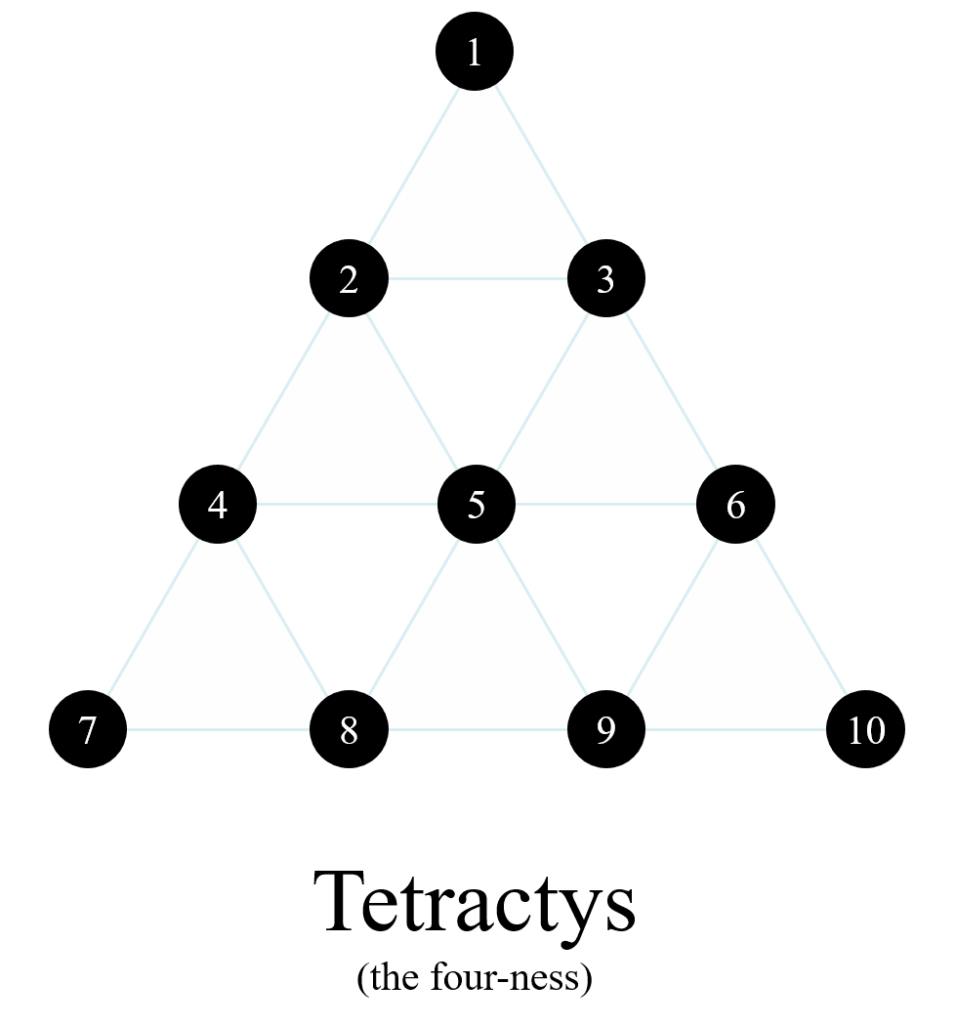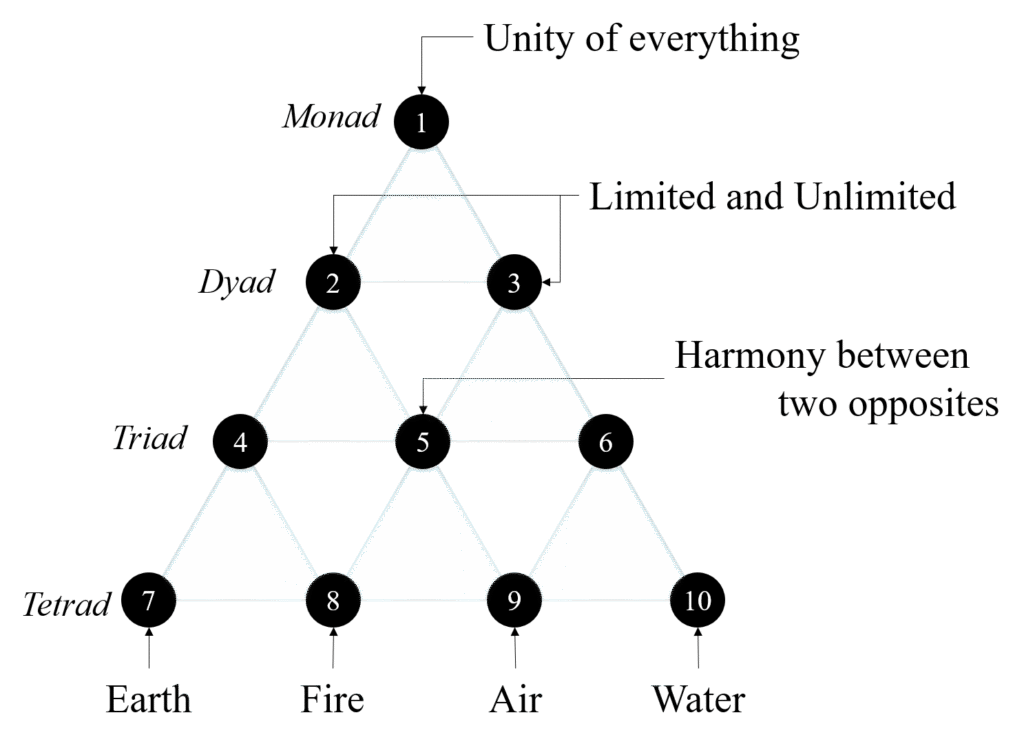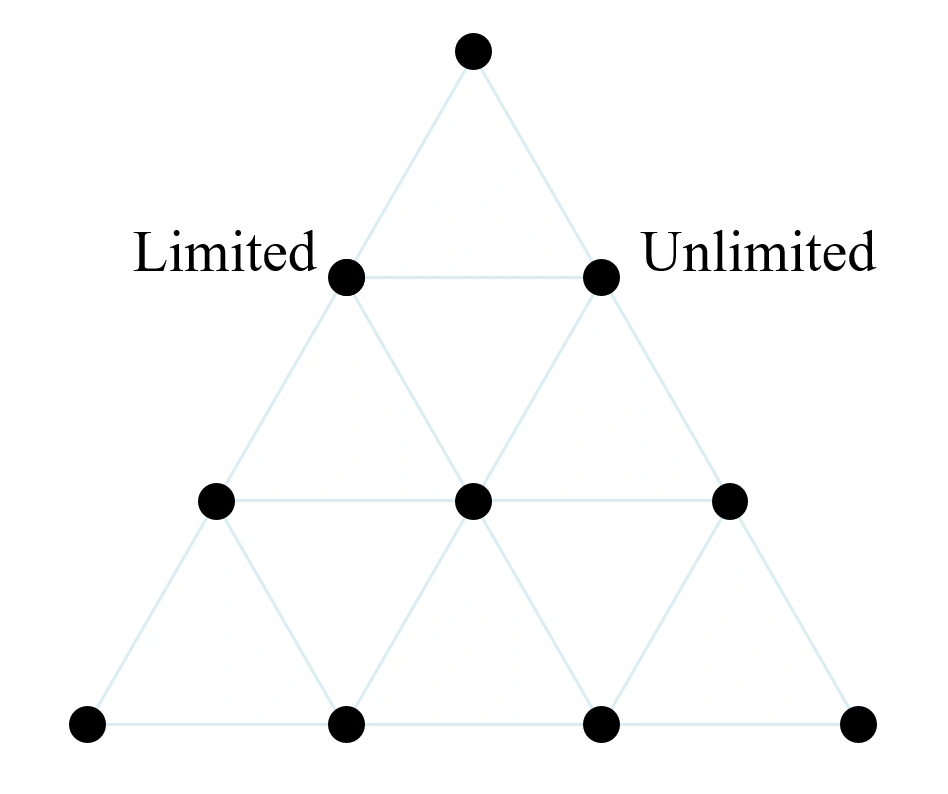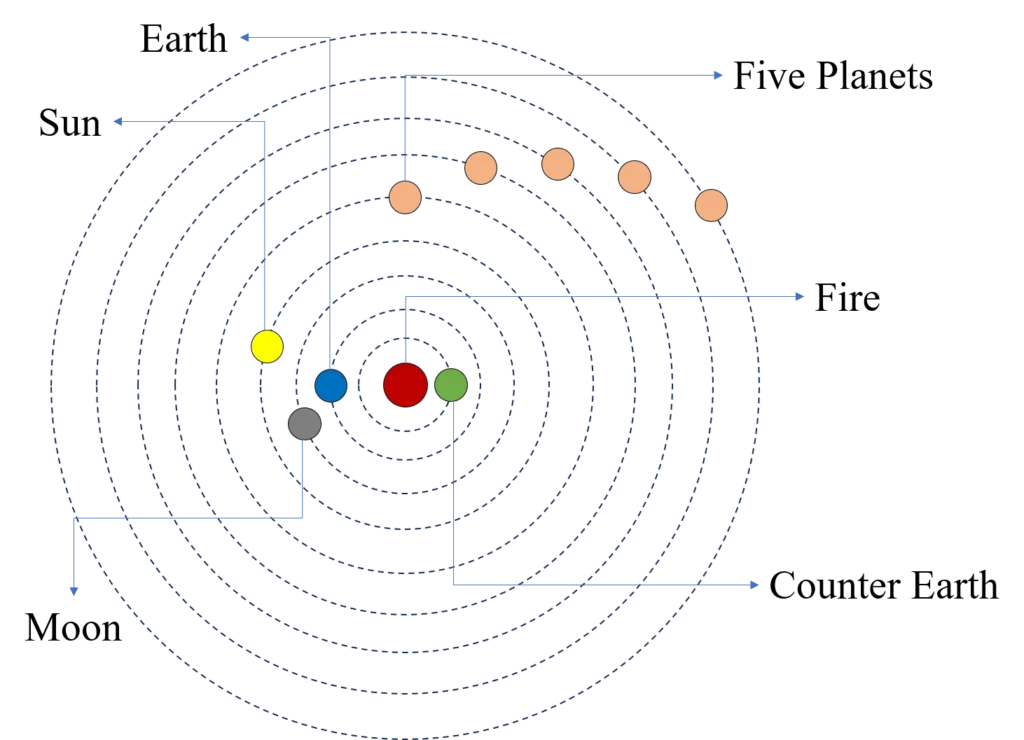Discover the key ideas of Pythagoras’ philosophy in simple words. Learn about the dyad of limit and unlimited, the role of numbers in musical harmony, the Pythagorean design of the universe, the table of opposites, and the lasting significance of his thought. Perfect revision notes for students.
Table of Contents
Life, Beliefs, and Mystery
- Birthplace: Born in Samos, an Ionian city near Miletus, around 570–495 BC.
- Travel: Moved from Samos to Croton, Italy, in 530 BC.
- Work: Founded a religious community in Croton combining philosophy, mathematics, religion, and music.
- Mystical Image: Seen as divine; believed to be the son or incarnation of Apollo.
- Legends:
- Had a golden thigh as proof of divinity.
- Claimed to appear in two places at the same time (bilocation).
- Could talk to animals; once made a bear promise not to harm anyone.
- Remembered all past lives, including being a Trojan hero.
- Divided the world into three types of beings: humans, gods, and himself.
- No Written Works: Pythagoras wrote nothing; teachings were secret and shared only within his community.
- Membership Rules:
- Candidates had to stay silent for years, listening from behind a curtain without questions.
- Only after approval could they see and talk to Pythagoras.
- Members had to promise never to share teachings with outsiders.
- Women, including his wife and daughter, were respected members.
- Sources of Information: Accounts about him come from students, later philosophers, and historians such as Xenophanes, Philolaus, Diogenes, Porphyry, Iamblichus, Plato, and Aristotle. These often differ greatly.
- Challenge in Study: Difficult to separate his real philosophy from myths and students’ interpretations.
Summary
Pythagoras was a mysterious Greek thinker who mixed philosophy, religion, mathematics, and music. He founded a strict, secretive religious community in Croton. Many stories about him are legendary, making it hard to know which teachings are truly his. Since he left no writings, our knowledge comes from later sources that often disagree.
Religious Beliefs and Philosophy of Life
- Immortal Soul: The soul never dies; after death it moves to another body — human or animal. This process is called metempsychosis (reincarnation).
- Goal: Escape the cycle of birth and death by purifying the soul.
- Purification Method: Achieved through gaining philosophical wisdom and living a virtuous life in harmony with the universe.
- Living in Harmony:
- Follow the natural order of the universe.
- Avoid actions against universal laws.
- Like adapting to another country’s culture and rules, we must understand the universe’s principles.
- Mathematical Universe:
- The universe has its own order and rules.
- This order is mathematical in nature; everything can be understood through numbers.
- “Everything is number” was his famous idea.
- Religion + Mathematics: To achieve salvation, understand the mathematical nature of reality and live accordingly.
- Five Practices for Soul Purification:
- Asceticism: Disciplined, simple life for spiritual and moral growth.
- Silence: Speak less to develop focus and self-control.
- Dietary Rules: Follow specific eating restrictions.
- Music: Improves focus and balance of the mind.
- Physical Exercise: Maintains health and positive energy.
- 15 Unusual Religious Rules:
- Do not eat beans.
- Do not pick up what has fallen.
- Do not touch a white cock (rooster).
- Do not break bread.
- Do not step over a crossbar.
- Do not stir the fire with iron.
- Do not eat from a whole loaf.
- Do not pluck a garland.
- Do not sit on a quart measure.
- Do not eat the heart.
- Do not walk on highways.
- Do not let swallows share your roof.
- When removing a pot from the fire, smooth the ashes instead of leaving the marks.
- Do not look in a mirror beside a light.
- After getting out of bed, roll and smooth the bedclothes.
Summary
Pythagoras taught that the soul is immortal and reborn in different bodies. The way to end this cycle is to purify the soul through wisdom and a harmonious life aligned with the universe’s mathematical order. His approach blended religion, mathematics, music, exercise, diet, and discipline, supported by unusual community rules — from avoiding beans to smoothing the bed after rising.
Common Myths About Pythagoras – Facts vs. Reality
- Pythagoras Theorem:
- He did not discover it.
- The theorem was known in Babylon, Egypt, and India around 1000 years before him.
- He may have introduced or proved it in Greece, but not invented it.
- Vegetarianism:
- He did not strictly require vegetarianism.
- Early followers avoided certain animal body parts, but complete vegetarianism became common only after his death.
- Metempsychosis (Reincarnation):
- The belief that the soul is reborn repeatedly.
- Not borrowed from Egyptians — their afterlife belief was different from reincarnation.
- Possibly influenced by Indian philosophy, where reincarnation was taught for thousands of years.
- Harmony with the Universe:
- The idea of following the universe’s order is similar to the Indian concepts of Rit and Dharma.
- Many of his ideas have parallels in Indian philosophy.
Summary
Many popular beliefs about Pythagoras are not historically accurate. He did not invent the Pythagoras theorem, was not strictly vegetarian, and likely drew inspiration for reincarnation from Indian rather than Egyptian thought. His teaching about living in harmony with the universe also resembles concepts in Indian philosophy.
Metaphysics – Reality and the Tetraktys

- Source of Reality:
- Unlike Anaximander’s “Apeiron” (unlimited), Pythagoras said reality comes from both limited and unlimited.
- The limited gives shape and form to the unlimited, creating the material world.
- Tetraktys – Sacred Symbol:
- A triangle made of 10 dots, representing both points and numbers.
- Considered sacred by Pythagoreans, symbolising the creation of the world.

- Four Levels of the Tetraktys:
- Monad (1 dot): The first cause, unity, the ultimate source of everything.
- Dyad (2 dots): Duality emerging from unity — two opposite forces: limited (order) and unlimited (chaos).
- Triad (3 dots): Harmony between the two opposite forces, maintaining balance.
- Tetrad (4 dots): Represents the material world. When harmony is achieved, the first building block of the world emerges.
- Four Elements:
- The 4 dots of the Tetrad symbolise earth, water, air, and fire — the basic components of the physical world.
- Mathematical Order:
- The harmony between limited and unlimited is mathematical in nature, forming the structure of reality.
Summary
Pythagoras taught that reality is formed from the interaction of the limited and the unlimited. This process is represented by the sacred Tetraktys — a triangle of 10 dots showing the stages from unity, to duality, to harmony, and finally to the physical world made of four elements. For Pythagoreans, the universe’s order was mathematical, and understanding it was the key to understanding reality.
Material Dimension and the Tetraktys
First Row (Monad)

One dot representing a point — a single position in space with no length, width, or height. This point contains the potential for all dimensions but is dimensionless itself.
Second Row (Dyad)

Two points form a line — this is one-dimensional with only length. The line has length but no width or height.
Third Row (Triad)

Three points create a surface — this is two-dimensional, having length and width but no height. Examples: triangles, rectangles, circles — all flat shapes with area but no volume.
Fourth Row (Tetrad)

Four points form a solid, which is three-dimensional with length, width, and height. Examples: cubes, pyramids, spheres, cylinders, cones — all physical objects with volume. The simplest 3D solid is the tetrahedron, made of four points.
Dyad and the Role of Limit and Unlimited

- Dyad means two opposite forces – the Limited and the Unlimited.
- Unlimited = void or empty space: It exists, but it has no clear form, no division, no boundary. Think of it like the “apeiron” (boundless) of Anaximander or the “air” of Anaximenes.
- Limited = principle of boundary: It gives form and shape to the unlimited void.
- Aristotle’s explanation: In Physics, he wrote that cosmogony (the creation of the cosmos) begins when the Unlimited is drawn in by the Limiting Principle.
- For Pythagoreans: Points are the limiting principles, and they are also seen as numbers. When points (numbers) impose limits on the void, the process of creation begins.
Summary
In Pythagoras’ philosophy, the Dyad represents two key forces: the Unlimited (boundless space or void) and the Limited (points or boundaries). The void alone has no form, but when points act as limits, they shape it into dimensions. This marks the beginning of the cosmos, as Aristotle explained, with numbers (points) giving structure to the infinite.
The Concept of Musical Harmony
- Music is based on harmony, and harmony is created through perfect mathematical order.
- Lyre instrument: A famous Greek instrument with 7 strings (sometimes more or fewer). The notes depend on string tension, not length. Hermes, a Greek god, is said to have invented it.
- Pythagoras’ discovery: He built a monochord (one-string instrument with a movable bridge) to study sound ratios.
Key ratios:

- Full string (12 inches vibrating) → Root sound → Ratio 1:1
- Half string vibrating → Octave sound → Ratio 2:1
- Two-thirds vibrating → Fifth note → Ratio 3:2
- Three-fourths vibrating → Fourth note → Ratio 4:3
These ratios (2:1, 3:2, 4:3) are found in the Tetraktys, a key Pythagorean symbol.

- Main idea: The length itself is not important, but the proportion between lengths creates harmony. Music is built on numbers, and just as numbers give order to music, they also give order to the universe.
Summary
Pythagoras explained that music is harmony created by mathematical ratios. By experimenting with the monochord, he discovered that perfect notes come from specific proportions (1:1, 2:1, 3:2, 4:3). This shows that numbers are the foundation of music and also the key to understanding the order of the universe.
The Design of the Universe

- Tetraktys and the cosmos: The Tetraktys has 10 numbers, and for Pythagoreans, this represents the 10 heavenly bodies in the universe.
- Fire as the central element: Fire was considered the most precious, so it was placed both at the center of the universe and at the outermost boundary.
- Cosmic arrangement:
- Central fire at the middle.
- Earth on one side, Counter-Earth on the other (always invisible from Earth).
- Moon revolves around Earth.
- Sun revolves around the central fire.
- Five planets also revolve around the central fire.
- Stars form the outermost sphere.
- Music of the spheres: Pythagoras taught that the movement of planets and their distances create a continuous cosmic sound. We cannot hear it, but it always exists. This is called the Music of the Spheres.
Summary
According to Pythagoras, the Tetraktys not only represents numbers but also the design of the universe. Ten heavenly bodies revolve around a central fire, with Earth, Counter-Earth, Moon, Sun, planets, and stars arranged in order. Their motion produces a hidden harmony called the Music of the Spheres, showing how mathematics, music, and the cosmos are deeply connected.
The Table of Opposites
- Cause and effect principle: Since the world was created from two principles—Limited and Unlimited—this dual nature also exists within the world.
- Table of Opposites: To explain this, Pythagoras created a list of 10 pairs of opposites, similar to the 10 numbers in the Tetraktys.
- The opposites are:
- Limited and Unlimited
- Odd and Even
- One and Plurality
- Right and Left
- Male and Female
- Rest and Motion
- Straight and Curved
- Light and Darkness
- Good and Evil
- Square and Oblong
- Balance of opposites: These opposites are not enemies but complements. The universe depends on the harmony and balance between them. Together they create order and structure.
Summary
Pythagoras explained the universe through a Table of Opposites. Just as the world was formed by Limited and Unlimited, it also contains other pairs like Odd and Even, Light and Darkness, and Good and Evil. These opposites do not fight but balance each other, maintaining harmony in the universe.
Significance of Pythagoras’ Philosophy
- Knowledge of reality and human life: For Pythagoras, understanding metaphysical reality is directly linked to human life. Unlike Thales, who sought reality out of curiosity, Pythagoras believed that knowing the mathematical order of reality helps humans live a virtuous life and escape the cycle of birth and death. Knowledge of reality guides ethics and virtue.
- Focus on form, not matter: Earlier Milesian philosophers focused on matter (the substance of the universe). Pythagoras shifted attention to form and mathematical order. This idea later strongly influenced Plato, and through him, many later philosophers.
- Separation of objects and forms: Objects are material and visible, but their forms are abstract and mental concepts. For Pythagoras, form is more real than the object itself. Ultimate reality cannot be known through the senses but only through reason, logic, and mathematics.
- Universe as Cosmos: Pythagoras was the first to call the universe a cosmos, meaning order and beauty. He taught that the universe is not chaos but a systematic, mathematically ordered whole that can be understood with precision.
- Unity of religion and philosophy: Pythagoras combined philosophy with religion, science, mathematics, music, and mysticism, creating a holistic worldview unlike earlier philosophers.
Summary
Pythagoras’ philosophy is significant because it connects reality to human life, shifts focus from matter to form, and highlights reason over sense experience. He described the universe as an ordered cosmos and united religion with philosophy. His ideas deeply influenced Plato and later thinkers, shaping the foundation of Western philosophy.
Recommended Reading
Disclosure: As an Amazon Associate I earn from qualifying purchases, at no extra cost to you. Learn more.

Leave a Reply